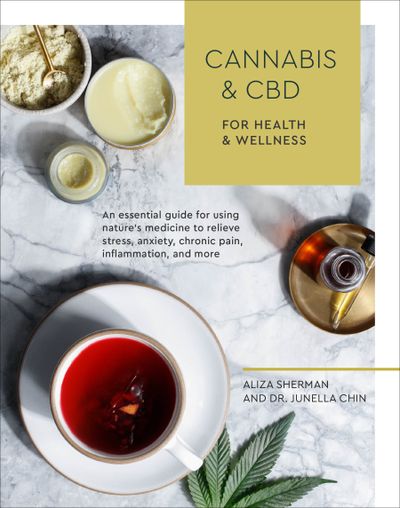Authors explain science of cannabis and how it works

The cyclical nature of popular culture is quite fascinating in its predictability. Fashion trends, music styles and even political viewpoints seem to have a way of coming back into vogue every few generations.
Just think – about 100 years ago, it wasn’t unusual to find tinctures of cannabis in drug stores and medicine cabinets throughout the United States. And we’re getting back to that, with 33 states and the District of Columbia legalizing medical-use cannabis and many more allowing CBD products.
Such a big shift has generated a lot of curiosity and confusion for people of all ages. It’s hard to go from thinking something is illegal and harmful to the view that it could actually have health benefits.
“Cannabis & CBD for Health & Wellness: An Essential Guide for Using Nature’s Medicine to Relieve Stress, Anxiety, Chronic Pain, Inflammation, and More” (Ten Speed Press) is a new book by Aliza Sherman, co-founder of the women’s cannabis wellness network Ellementa, and Dr. Junella Chin, an osteopathic physician and founder of MedLeafRX, that shares how cannabis can be safely used to treat a range of conditions.
Like a number of cannabis guidebooks landing on shelves in recent years, there’s plenty of background to establish and terminology to explain, especially for newbies whose knowledge of cannabis has largely been influenced by the War on Drugs narrative or depictions in “stoner” media.
The authors spend the early chapters focusing on the science of the plant itself and how its chemical compounds called cannabinoids – the most well-known being THC and CBD, are just two of hundreds – interact with the human endocannabinoid system (ECS), which helps other biological systems regulate physical and cognitive functions.
“Some scientists think that many human ailments and diseases … stem from an imbalance or weakness in the ECS and can be (or even have been) successfully treated by introducing phytocannabinoids (or plant cannabinoids) into the body,” write Sherman and Chin in chapter 3.
The middle section of the book is devoted to familiarizing the reader with the distinctions between cannabinoids and terpenes, and various forms for cannabis along with methods of consumption or application. Unlike other primers, the text focuses more on how certain methods may be conducive for certain medical conditions.
The real meat for an individual seeking information about how cannabis, especially CBD, can be used medicinally comes in chapters 8 through 12, which include information about beginning and evaluating moderated consumption through microdosing, as well as anecdotal information about Dr. Chin’s patients’ and their treatments of acute and chronic conditions with cannabis.
Providing background for the patient’s condition, the book describes Dr. Chin’s recommended treatments and her work in tandem with the patient’s other physicians to monitor their progress.
Like many other medical treatment plans, there was often a need to adjust or eliminate certain doses that had detrimental side effects. Patience seems to be the guiding principle for people seeking relief through cannabis, whether higher or lower level CBD products.
It may take months to work, but after years of pain and suffering without relief from traditional medicine, it’s a process that many are desperate to begin exploring.
Ultimately, though, the stories in this book are just anecdotes. Although opportunities to research cannabis are growing, scientists are still restricted by the federal classification of cannabis as a Schedule 1 drug.
Sherman and Chin’s book is a good starting place, but attempts to manage a condition with cannabis should be pursued in consultation with a medical professional.